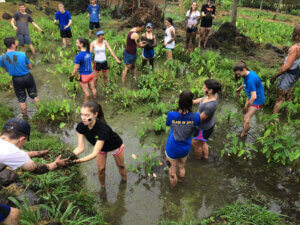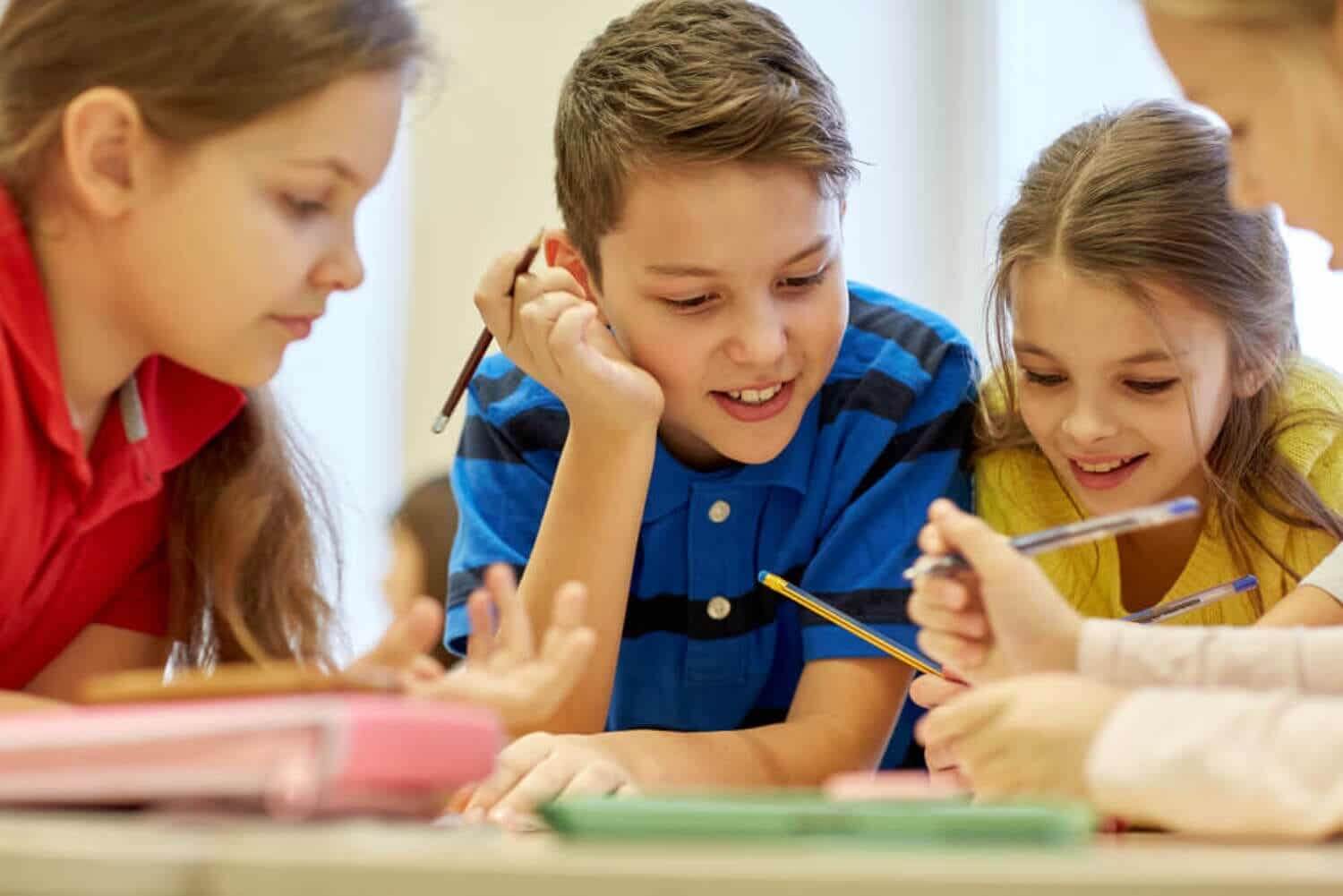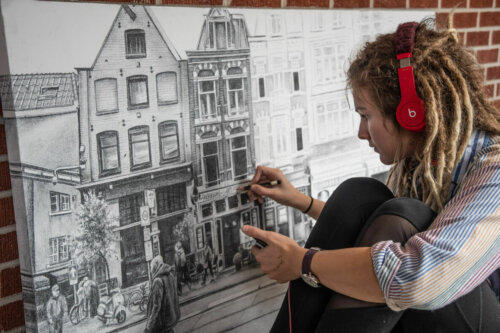Service Learning Methodology: What is it?

Education for citizenship is part of our educational system’s curriculum. However, we need to treat it differently than the rest of the subjects children work on at school. The service learning methodology contributes to the training of critical, responsible, supportive, and participatory citizens.
In other words, the service learning methodology is an educational strategy in which children do activities that help their communities.
Community needs are the basis of the service learning methodology
In his article, “What are we talking about when we talk about service learning?”, Roser Battle states that it’s learning based on contact and service to the community.
Therefore, the starting point for the service learning methodology is identifying and recognizing a problem. So, the students and educators need to find a problem in the community that they can improve.

Then, the students learn as they develop a solution for the problem. In addition, they work together and collaborate with people who are part of the community.
The goal is for the students to learn new competencies and skills that relate to the curriculum. However, instead of learning inside the classroom, they’re doing so through service to the community and a charitable project.
People’s needs and activities within the community
Our communities have so many needs. So, there are numerous projects and activities you can plan in order to meet those needs. For example:
- Reforestation of parks. For this, you’ll need to plant trees.
- Food drives for families and people in need.
- Assistance, care, and company for the elderly.
- Technological workshops run by younger people. They can teach older people how to use new technology.
- Activities and festivals that promote local culture and customs.
- Campaigns to educate young people about the negative effects of alcohol and drugs on them and their loved ones.
- Reading stories to younger children.
In addition to doing these activities, the students will also need to be the ones to find all the information about those problems in their community. Through dialogue and reflection with different community members, they’ll be able to meet their community’s needs.
With those needs in mind, the students will be able to develop projects. In those projects, they should state the problem they’re addressing and the actions they’ll carry out. In addition, they’ll need to organize their group members to decide who will do what and when. Also, they’ll be in charge of organizing any necessary resources and deciding how to use them.
The skills obtained through the service learning methodology
The service learning methodology combines academic learning with community service. For example, it combines school content, like habitats and tree species, with the practice of actually planting them. Or, it combines learning about narrative language with the action of reading stories to the elderly or younger children.
Therefore, service learning bridges theory and practice. It creates a union between the theoretical contents of school subjects and their real-world application. As a result, students learn new competencies, skills, and values.

They acquire skills like social and civic abilities, knowledge of their community, and how to interact with the physical world. In addition, they learn skills like decision-making and taking initiative. Also, they learn and develop social skills like empathy, assertiveness, cooperation, and conflict resolution.
And, of course, the service learning methodology is a powerful pedagogical tool that teaches values. That’s because you can’t serve the community without practicing essential values like companionship, cooperation, respect, solidarity, and responsibility.
The importance of motivation in service learning
It’s important that students are able to apply the academic content they learn in school to the real world. Service learning makes that possible because students are working to improve and transform a certain situation using their academic knowledge. By using their knowledge to help a group of people or a specific situation, significant learning is taking place.
That’s why community service can be very motivating for students. They’re able to leave the physical classroom and work with people to solve their real-world problems. As a result, students feel helpful, which can be very motivating.
Conclusion
Motivation is the starting point for reaching pedagogical and educational goals. It helps to improve students’ school and academic performance. Then, as a result, it helps students with their own personal development.
Education for citizenship is part of our educational system’s curriculum. However, we need to treat it differently than the rest of the subjects children work on at school. The service learning methodology contributes to the training of critical, responsible, supportive, and participatory citizens.
In other words, the service learning methodology is an educational strategy in which children do activities that help their communities.
Community needs are the basis of the service learning methodology
In his article, “What are we talking about when we talk about service learning?”, Roser Battle states that it’s learning based on contact and service to the community.
Therefore, the starting point for the service learning methodology is identifying and recognizing a problem. So, the students and educators need to find a problem in the community that they can improve.

Then, the students learn as they develop a solution for the problem. In addition, they work together and collaborate with people who are part of the community.
The goal is for the students to learn new competencies and skills that relate to the curriculum. However, instead of learning inside the classroom, they’re doing so through service to the community and a charitable project.
People’s needs and activities within the community
Our communities have so many needs. So, there are numerous projects and activities you can plan in order to meet those needs. For example:
- Reforestation of parks. For this, you’ll need to plant trees.
- Food drives for families and people in need.
- Assistance, care, and company for the elderly.
- Technological workshops run by younger people. They can teach older people how to use new technology.
- Activities and festivals that promote local culture and customs.
- Campaigns to educate young people about the negative effects of alcohol and drugs on them and their loved ones.
- Reading stories to younger children.
In addition to doing these activities, the students will also need to be the ones to find all the information about those problems in their community. Through dialogue and reflection with different community members, they’ll be able to meet their community’s needs.
With those needs in mind, the students will be able to develop projects. In those projects, they should state the problem they’re addressing and the actions they’ll carry out. In addition, they’ll need to organize their group members to decide who will do what and when. Also, they’ll be in charge of organizing any necessary resources and deciding how to use them.
The skills obtained through the service learning methodology
The service learning methodology combines academic learning with community service. For example, it combines school content, like habitats and tree species, with the practice of actually planting them. Or, it combines learning about narrative language with the action of reading stories to the elderly or younger children.
Therefore, service learning bridges theory and practice. It creates a union between the theoretical contents of school subjects and their real-world application. As a result, students learn new competencies, skills, and values.

They acquire skills like social and civic abilities, knowledge of their community, and how to interact with the physical world. In addition, they learn skills like decision-making and taking initiative. Also, they learn and develop social skills like empathy, assertiveness, cooperation, and conflict resolution.
And, of course, the service learning methodology is a powerful pedagogical tool that teaches values. That’s because you can’t serve the community without practicing essential values like companionship, cooperation, respect, solidarity, and responsibility.
The importance of motivation in service learning
It’s important that students are able to apply the academic content they learn in school to the real world. Service learning makes that possible because students are working to improve and transform a certain situation using their academic knowledge. By using their knowledge to help a group of people or a specific situation, significant learning is taking place.
That’s why community service can be very motivating for students. They’re able to leave the physical classroom and work with people to solve their real-world problems. As a result, students feel helpful, which can be very motivating.
Conclusion
Motivation is the starting point for reaching pedagogical and educational goals. It helps to improve students’ school and academic performance. Then, as a result, it helps students with their own personal development.
All cited sources were thoroughly reviewed by our team to ensure their quality, reliability, currency, and validity. The bibliography of this article was considered reliable and of academic or scientific accuracy.
- Puig Rovira, J. M., Gijón Casares, M., Martín García, X. y Rubio Serrano, L. (2011). Aprendizaje-servicio y Educación para la Ciudadanía. Recuperado de http://repositorio.minedu.gob.pe/bitstream/handle/123456789/1000/2011_Puig_Aprendizaje-servicio%20y%20Educaci%C3%B3n%20para%20la%20Ciudadan%C3%ADa.pdf?sequence=1&isAllowed=y
- Batlle, R. (2011). ¿ De qué hablamos cuando hablamos de aprendizaje-servicio. Crítica, 972(61), pp. 49-54. Recuperado de http://roserbatlle.net/wp-content/uploads/2012/02/de-que-hablamos-cuando-hablamos-de-aps-revista-crc3adtica1.pdf
- Puig, J. M., Batlle, R., Bosch, C. y Palos, J. (2007). Aprendizaje servicio. Educar para la ciudadanía. Barcelona: Octaedro. Recuperado de http://educacion.wke.es/agendaonline/Admin/Upload/2816/aprendizaje%20servicio%20muestra.pdf
This text is provided for informational purposes only and does not replace consultation with a professional. If in doubt, consult your specialist.








